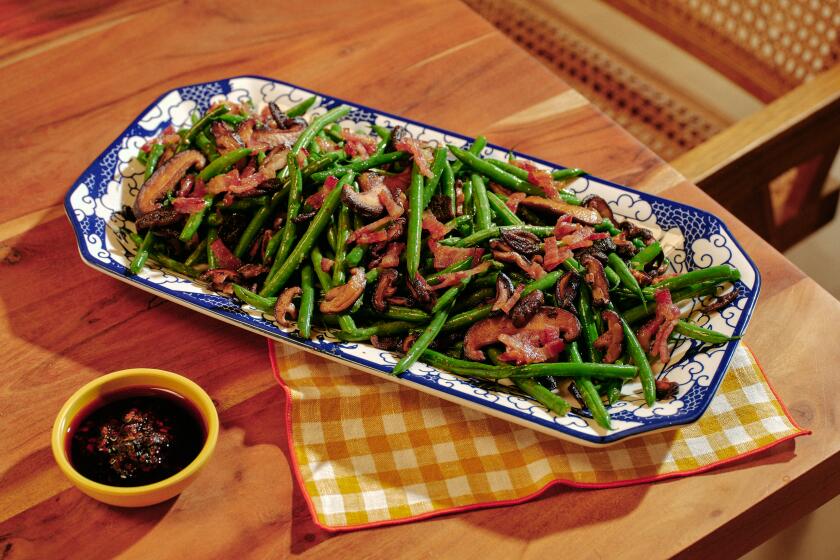Ingriyi (sweet and sour meat and eggplant)
The meat and vegetables in this Iraqi stew are cooked separately and drizzled with a sauce of tamarind and meat broth before baking. Each bite is a collage of tender lamb, silky eggplant and jammy tomato, brightened by deliciously tamarind-fruity juices.
From the story: This way to tamarind tanginess
Simmer the meat in water to cover with 2 teaspoons salt for 1 1/2 to 2 hours, until tender. Strain the meat, saving the meat and 1 cup of the stock separately. You may discard the rest of the stock.
While the meat is simmering, sprinkle the eggplant slices with salt and set aside for 1 hour to draw out their juices. Cook the onions in a large frying pan in the oil over low heat until soft and very brown and caramelized.
Heat the oven to 350 degrees. Rinse the eggplant and dry in a tea towel. Fry the slices briefly in very hot oil, turning over once, until lightly browned. Drain on paper towels. Alternatively, you can brush the slices with oil and cook them under the broiler.
In a large baking dish, layer the ingredients. Begin with a layer of eggplant, and season with one-fourth teaspoon salt and a pinch of pepper. Next, layer half of the meat and onions, seasoning with one-eighth teaspoon salt and a small pinch of pepper. Cover with a layer of half of the tomato slices, seasoning with one-fourth teaspoon salt and a pinch of pepper. Repeat with a second seasoned layer each of eggplant, meat and onions, and tomatoes.
Heat 1 cup of the meat stock in a small pan and stir in the tamarind liquid and sugar. When the sugar has dissolved and the mixture is blended, pour it evenly over the layers.
Bake for 30 to 40 minutes, until hot. Serve with rice.
Tamarind liquid
Gently simmer the tamarind pulp in 4 cups water for 10 minutes. Remove from the heat, cover and let sit for 30 minutes.
Press the softened pulp through a sieve, breaking up the pulp and, if necessary, pouring some already-strained liquid through a second or third time to loosen the pulp enough to extract all the liquid. Discard the solids. You should have about 3 cups. Refrigerate tamarind liquid for up to a week or measure it into ice-cube trays and freeze for convenient future use.
Tamarind paste is a packaged block of pulp (typically 14 ounces, various brands). It’s available at Indian and other Southeast Asian markets, Middle Eastern markets and Filipino markets. Or you can use canned “fresh tamarind concentrate” (use the same amount as of tamarind liquid).
Get our Cooking newsletter.
Your roundup of inspiring recipes and kitchen tricks.
You may occasionally receive promotional content from the Los Angeles Times.















